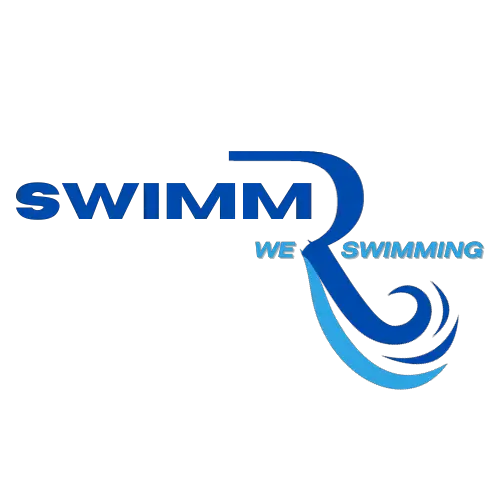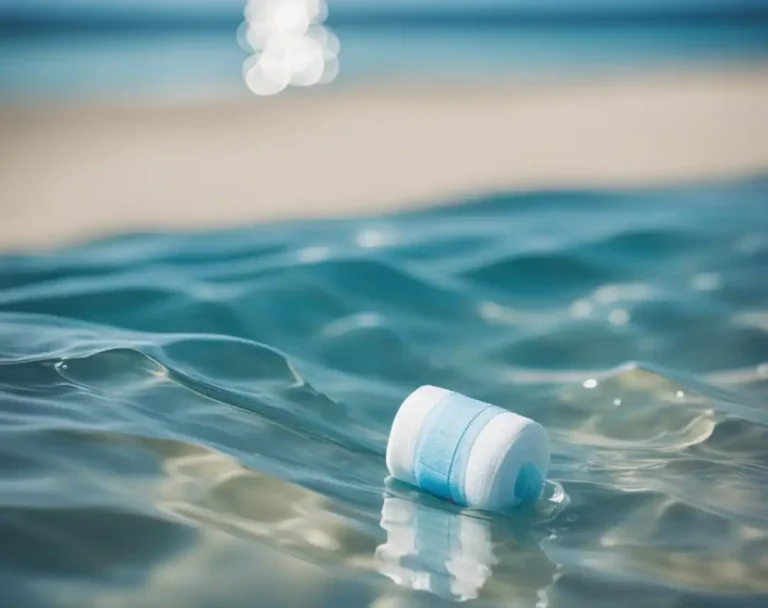Unlock the full potential of your swim with our guide to swimming stretches, the key to enhancing flexibility, performance, and injury prevention in the water. Incorporating targeted stretches before and after your swims can lead to smoother strokes, greater range of motion, and increased muscular endurance.
Whether you’re a competitive swimmer or enjoy leisurely laps, understanding and practicing effective stretching techniques is crucial for a holistic swimming regimen. Dive into the world of swimming stretches with us, and feel the difference in your swim today.
Foundations of Stretching for Swimmers
I’ve discovered that incorporating a consistent stretching routine unlocks a whole new level of performance for swimmers. It’s like finding an extra gear in the pool!
Benefits of Stretching
Stretching is the unsung hero behind every powerful stroke I take. It’s astounding how it elevates my flexibility and range of motion, essential elements for a swimmer’s arsenal. A well-stretched muscle has a lower risk of injury, and I’ve experienced it firsthand. By improving blood flow, my muscles are primed and ready for the intensity of swimming.
Here’s how stretching has become my trusty sidekick:
- Dynamic stretching warms me up, getting those muscle fibers firing.
- Static stretching cools me down, which means less soreness the next day.
Stretching Basics
Let’s dive into the nitty-gritty: the core of my stretching routine is a mix of static and dynamic moves. At the start, it’s all about the dynamic action to boost my mobility and prep my body. After I’ve crushed the waves, I wind down with static holds to keep my muscles long and limber. Think of it as my very own restorative ritual that keeps me swimming smoothly and swiftly. Remember, a stretch well done today can mean a personal best tomorrow!
Specific Stretches for Key Muscle Groups
Stretching can transform my swimming experience, targeting the very muscles that propel me through the water. Let’s dive into the essential stretches that hone in on key muscle groups, enhancing my stroke and reducing the risk of injury.
Upper Body Stretches
Shoulders and Chest
- Arm Swings: Stand with my arms outstretched and parallel to the ground, then swing them slowly across my chest, one over the other, to loosen the deltoids and pectoral muscles.
- Tricep Stretch: Raise my arm, bend it backward at the elbow, and use my other hand to press my elbow, stretching the triceps and lats.
Core and Back Stretches
Lower Back and Hip Flexors
- Standing Toe Touch: From a standing position, bend the waist and reach for my toes, holding the position to stretch my lower back and hamstrings.
- Kneeling Hip Flexor Stretch: Kneel on one leg, place the other foot in front, and lean forward, enhancing the flexibility of hip flexors and quads.
Lower Body Stretches
Hips, Hamstrings, and Quads
- Seated Butterfly: Sitting down, bring the soles of my feet together and press the knees downward to stretch the inner thighs and hips.
- Quadriceps Stretch: While standing, pull one foot up to my glutes, keeping my knees together, and hold to loosen my quads and glutes.
Swimming Strokes and Stretching Techniques
I can’t wait to share with you the specific stretches that can transform your swimming routine! The right stretching exercises prep your muscles for the swimming strokes to come, enhancing both your flexibility and performance. Let’s dive into the stretches tailored for freestyle, backstroke, and the combined effort needed for breaststroke and butterfly.
Freestyle-Specific Stretches
For freestyle, a focus on shoulder and side stretches is key. I always start with the Standing Arm Swing, where I swing my arms back and forth across the body, loosening up the shoulder joints. Then, I transition into the Arm Pull-Down with a Towel to really stretch out my lats and the sides of my torso, which are crucial for those long freestyle reaches.
| Stretch | Description | Repetitions |
|---|---|---|
| Standing Arm Swing | Swing arms back and forth across the body | 30 seconds |
| Arm Pull-Down with Towel | Pull a towel held in one hand over and down the back with the other hand | 15-20 seconds each side |
Backstroke-Specific Stretches
When it comes to the backstroke, my shoulder flexibility is a big deal. That’s why I rely on Door Frame Stretches. I’ll stand in a doorway, press my hands against the frame and lean forward to feel the stretch. Then, I’ll include a Pectoral Doorway Stretch, placing my forearm against the frame and turning my body away to open up my chest.
| Stretch | Description |
|---|---|
| Door Frame Stretch | Press hands against the frame of a door and lean forward |
| Pectoral Doorway Stretch | Place forearm on frame and twist body away |
Breaststroke and Butterfly Stretches
Both the breaststroke and butterfly demand a strong, explosive chest and inner thigh engagement. For these, I swear by the Butterfly Stretch, where I sit with the soles of my feet together and gently use my elbows to push my knees down. Without a doubt, the Cobra Pose from yoga gives me that chest expansion I need for a powerful stroke.
| Stretch | Description |
|---|---|
| Butterfly Stretch | Sit with feet together, push knees down with elbows |
| Cobra Pose | Lie on stomach, press hands into ground, and extend chest upward |
Remember, a precise stretching routine is not just an exercise, but a cornerstone of top-notch swimming performance. My go-to stretches for each stroke have not only sharpened my technique but kept my body in swim-ready shape year-round!
Integrating Stretching into Swim Training
I’ve discovered firsthand that incorporating a well-structured stretching program into swim training can boost my performance significantly. Not only does it rev up my muscles for the workout ahead, but it ensures a proper cool down afterwards, keeping my endurance high and making me a faster swimmer each day.
Pre-Swim Warm-Up
Before I dive in, I make it a point to wake up my muscles with dynamic stretches. This warm-up phase primes my body, elevating my heart rate and increasing blood flow to the muscles I’m about to engage.
- Arm Swings: I do 20 arm swings to loosen up my shoulders.
- Leg Swings: I perform 20 front-to-back and side-to-side leg swings to prepare my hips and legs.
The idea is to mimic the swimming motions to come, so my transition into the water is seamless, and my muscles are less prone to injury.
Post-Swim Cool Down
After I touch the wall on my final lap, it’s time for static stretches to cool down. This helps in gradually lowering my heart rate and aids in muscle recovery.
- Quadricep Stretch: I hold a single-leg quadricep stretch for 30 seconds on each leg.
- Shoulder Stretch: I stretch each arm across my body for 30 seconds to ease my shoulder muscles.
Cooling down properly ensures that I maintain my flexibility, which is crucial for an efficient stroke and enduring training sessions in pursuit of faster swimming.
Stretching Techniques and Props
Before I dive into my swim routine, I ensure my muscles are primed for action with a blend of yoga poses and nifty tools like foam rollers. I’ve found this prep step crucial for an exhilarating swim.
Yoga and Swimming
When I hit the mat, yoga is my go-to for flexibility and strength. Specifically, Cobra Pose does wonders for my back muscles, essential for that perfect stroke. I gently arch my spine, gazing upwards, and feel the stretch – it’s a game-changer! For my hips, nothing beats the Figure 4 Stretch. I cross one foot over my thigh, lean back, and invite the sweet stretch into my glutes and hips.
Using Foam Rollers and Other Tools
Foam rollers are my secret weapon. Rolling out my quads and IT bands preps me like nothing else. And here’s a tip: use a doorway for an epic chest stretch. I press my arms against the door frame and lean forward – it’s instant relief. Arm and leg swings also come into play. I use a wall for support, then swing my limbs to wake up those joints. And for a stronger push, the Wall Press works my calves and ankles – perfect for that kick-off from the pool’s edge.
Addressing Common Concerns
I vividly remember the first time I encountered shoulder pain during my swimming sessions; it was a wake-up call to the importance of proper stretching. Swimmers like me often face these challenges, but fear not—effective stretching can play a crucial role in prevention and correction.
Preventing Shoulder Pain and Injuries
Dynamic stretches before swimming activate my muscles, preparing them for the workout ahead. Movements like arm circles and butterfly stretches are specifically beneficial for my shoulders. Post-swim, I rely on static stretching to help reduce the risk of injury. Resources often suggest a doorway pec stretch—one of my personal favorites—to target the pectoral muscles.
- Dynamic Stretches:
- Arm Circles: 10 reps each arm
- Butterfly Stretch: Hold for 20 seconds
- Static Stretches:
- Doorway Pec Stretch: Hold for 30 seconds per side
Rectifying Muscle Imbalances
My meticulous attention to muscle imbalances has taught me that imbalances can lead to poor posture and even injury. By incorporating a balanced mix of stretches, including a pectoral stretch for my chest muscles, I work towards achieving a harmonious muscle symmetry. This approach ensures that none of my muscle groups, especially my pectorals, are neglected.
- Balance Practice:
- Pectoral Stretch: Mindful focus on even stretching
- Alternate Muscle Focus: Regular assessment of balance in strength and flexibility
Advanced Considerations for Competitive Swimmers
I’ve discovered that refining my stretching routine is not just beneficial, it’s crucial for elevating my performance in the water. Crafting a stretching strategy that’s as dynamic and tailored as my swimming practice has led to significant improvements in my strength, speed, and body position.
Tailoring Your Stretching Routine
Key Stretches:
- Pectoral Stretch – Essential for a strong pull.
- Latissimus Dorsi Stretch – Enhances upper body rotation.
- Hip Flexor Stretch – Crucial for optimal kick technique.
Essential Timings:
- Pre-workout: Activate muscles with dynamic stretches to prevent injury.
- Post-workout: Deep static stretches to alleviate muscle tension.
To achieve faster swimming, I integrate gym exercises that complement my in-pool efforts. Focused strength training targeting core and lower body muscles bolsters my body position, transforming my efficiency, and propulsion.
Consultation with Professionals
I work closely with a physical therapist who specializes in aquatic sports. When I hit a plateau or experience discomfort, my therapist’s expertise in swimming-specific exercises and essential stretches ensures my routine fosters both recovery and performance progression. Regular consultations have been a game-changer, fine-tuning my regimen for peak physical condition.
Practical Tips for Everyday Stretching
My morning kicks off with a spark as I dive into the day’s routine—stretching! Imagine this: I’m on the edge of the pool, revitalizing my body with stretches designed precisely for swimmers like me. With each stretch, my muscles wake up, fueling my excitement for the laps ahead.
Shoulder Stretches:
- I take care of my shoulders first, because they’re critical for my pulls in the water. I grab my left arm with my right hand and stretch it across my chest, holding for 15-30 seconds. Then, I switch arms. It’s simple but effective.
Leg Stretches:
For my lower body, I focus on leg stretches. Heel drops work wonders for my ankles and feet, while a good quad stretch keeps the pain at bay. I balance on one foot, pulling the other heel toward my glutes, always mindful to keep my knees together.
Ankle Flexibility:
Enhancing ankle flexibility can really step up my swimming game. I sit with my legs extended and loop a towel around my foot, gently pulling towards me for a deep ankle stretch.
Hip Loosening:
Lastly, I can’t forget about my hips—they do so much work during kicks! Seated or standing, I rotate my hips in circular motions, aiming for loosened joints and reduced tightness.
I follow these stretches with zeal, knowing that a flexible swimmer is a fast swimmer. Every day, I’m setting the foundation for speed and safety with each targeted stretch. There’s nothing quite like it to set the pulse racing!
FAQ – Frequently Asked Questions
Why are swimming stretches important?
They increase flexibility, reduce the risk of injury, and improve overall swimming performance by preparing muscles for activity.
What are some effective swimming stretches?
Shoulder stretches, chest openers, hip flexor and leg stretches, and core warm-ups are vital for swimmers.
When should I perform swimming stretches?
Dynamic stretches are best before swimming to warm up muscles, while static stretches after swimming help with cooling down and flexibility.
Thanks for exploring the benefits of swimming stretches with us. We hope these stretching techniques elevate your swimming experience. Share your favorite stretches and how they’ve improved your performance in the comments below or on our social media platforms like Instagram and Pinterest. Let’s stretch our way to better swims together!






